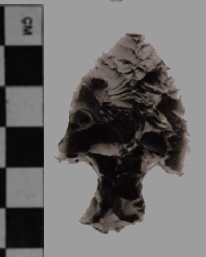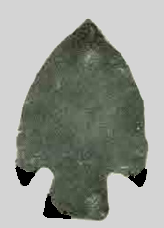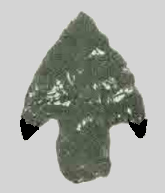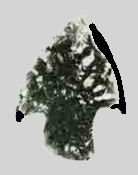Outline is Representative of Size and Shape:
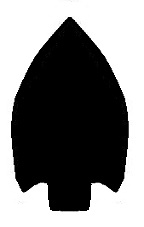
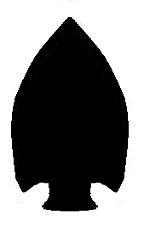

Type II

Type I
Name Details:
Identified By: Angel Garcia Cook
Named For:
Date Identified: 1967
Type Site: Cueva de la Nopalera, Hidalgo
Identified By: Angel Garcia Cook
Named For:
Date Identified: 1967
Type Site: Cueva de la Nopalera, Hidalgo
Point Validity:
Valid type
Cook was an influential anthropologist for the Instituto Nacoinal de Antropologia e Historia. He conducted extensive research in the Basin of Mexico. This type was defined in his research at Cueva de la Nopalera.
Cook was an influential anthropologist for the Instituto Nacoinal de Antropologia e Historia. He conducted extensive research in the Basin of Mexico. This type was defined in his research at Cueva de la Nopalera.
Encino Stemmed
Type I and Type IICluster:
Description of Physical Characteristics and Flaking Pattern:
This is a small to medium triangular stemmed to expanding stem point with an elliptical cross section. The blade is excurvate, curving in towards the tip and can become almost parallel at the widest portion of the blade (Type I). Type II generally does not become parallel. The shoulders are barbed and can point downward or point inward. The stem ranges from almost parallel to slightly expanding. The base ranges from straight to slightly concave with rounded basal corners. This point has a random flaking pattern.
Size Measurements:
Length - 27 to 48 mm, Stem Length - 12 to 17 mm, Blade Width - 18 to 28 mm, Narrowest Stem Width - 12 to 15 mm, Widest Stem Width - 12 to 16 mm, Thickness - 5 to 9 mm
Length - 27 to 48 mm, Stem Length - 12 to 17 mm, Blade Width - 18 to 28 mm, Narrowest Stem Width - 12 to 15 mm, Widest Stem Width - 12 to 16 mm, Thickness - 5 to 9 mm
Additional Comments:
Distribution: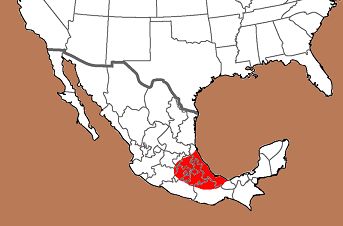

Distribution Comments:
This type is reported in This type has been reported at Cueva de la Nopalera, Hidalgo, Mexico. These points are thought to be found throughout the Valley of Mexico.
This type is reported in This type has been reported at Cueva de la Nopalera, Hidalgo, Mexico. These points are thought to be found throughout the Valley of Mexico.
Age / Periods:
Date: 2,000 - 900 B.P.
(0-1,100 d.n.e)
Cultural Period:Primer, Segundo, Tercer and Period
Glacial Period: Roman Warm
Culture:
Date: 2,000 - 900 B.P.
(0-1,100 d.n.e)
Cultural Period:Primer, Segundo, Tercer and Period
Glacial Period: Roman Warm
Culture:
Age Details:
Encino points are primarily associated with level 4 at Cueva de la Nopalera. Both Type I and Type II had decreased usage in level 3 and only Type II were found in level 2.
Encino points are primarily associated with level 4 at Cueva de la Nopalera. Both Type I and Type II had decreased usage in level 3 and only Type II were found in level 2.
Similar Points:
Ahumada, Arledge, Axolotl, Belem, Bulverde - Nopalera, Coxtanlan, Conejo, Diablo Corner Notch, Langtry, San Isidro, San Martin, Shumla, Tecolate, Tilapa, Trinidad, Ventana Amagosa
Ahumada, Arledge, Axolotl, Belem, Bulverde - Nopalera, Coxtanlan, Conejo, Diablo Corner Notch, Langtry, San Isidro, San Martin, Shumla, Tecolate, Tilapa, Trinidad, Ventana Amagosa
Other points in this cluster / Related / Associated Points:

